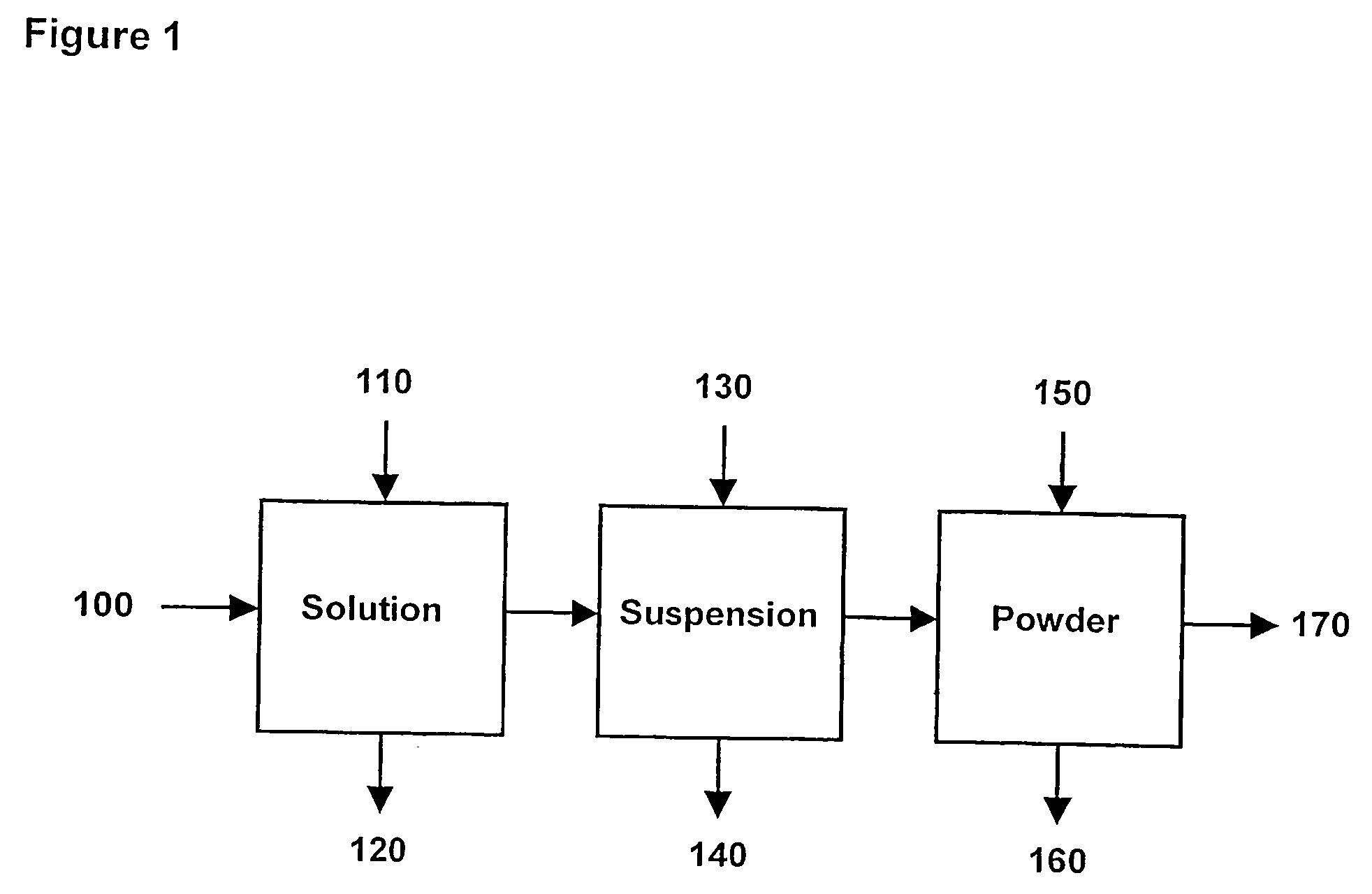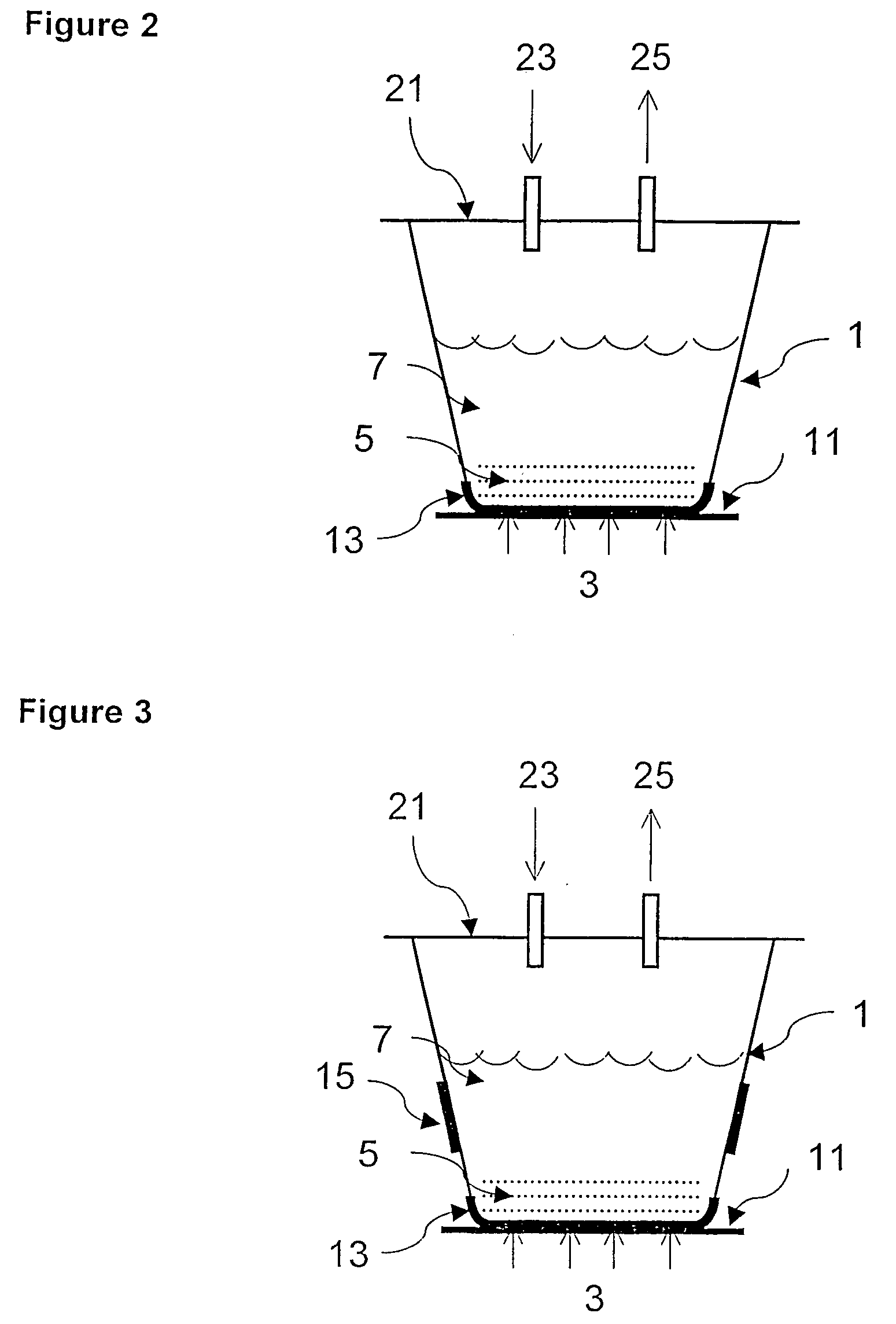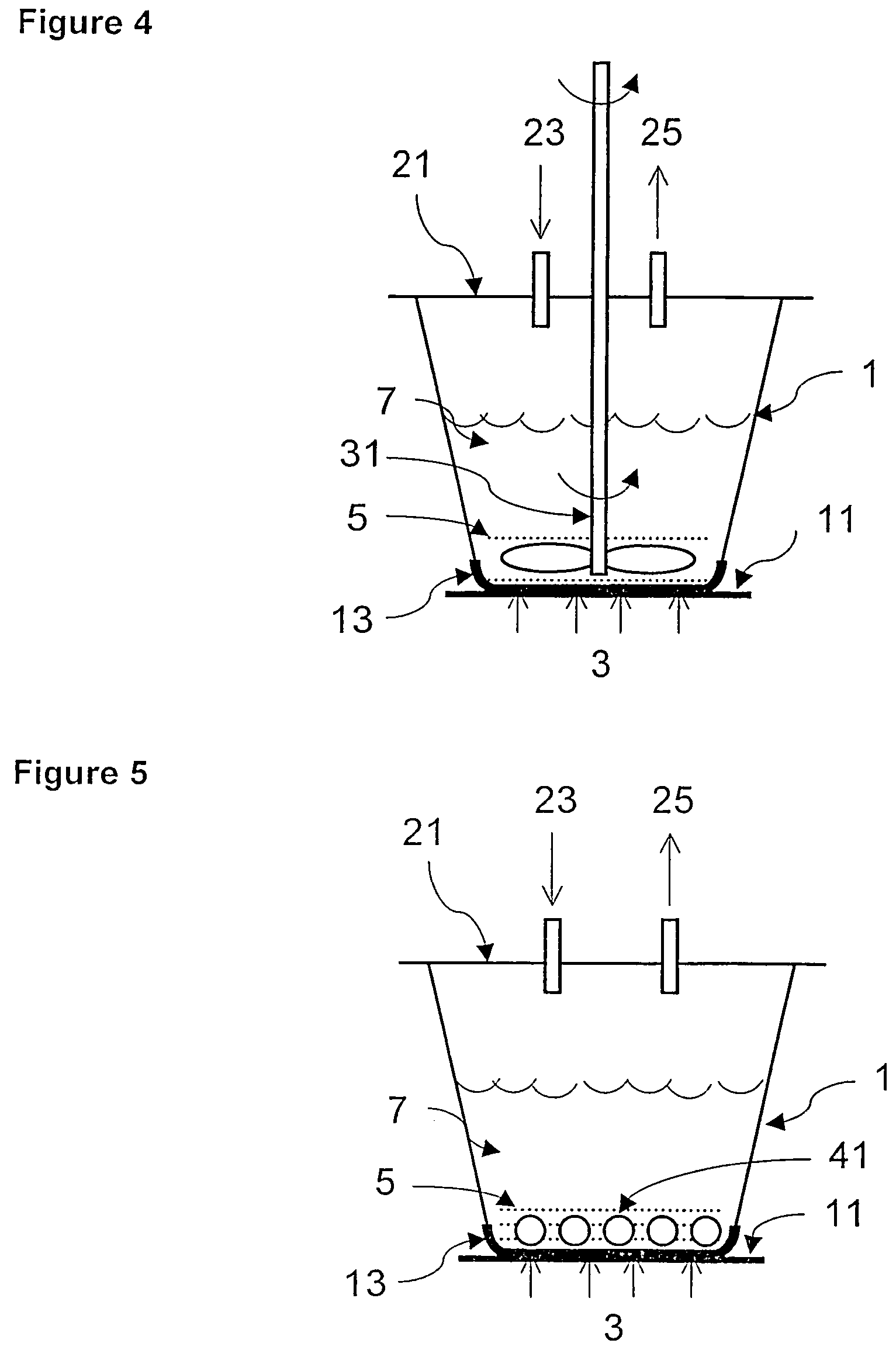Process of forming and modifying particles and compositions produced thereby
a technology which is applied in the field of forming and modifying particles and compositions produced thereby, can solve the problems of reducing the manufacturability and delivery efficiency of subsequent therapeutic efficacy, poor reproducibility and scalability in manufacturing, and low encapsulation efficiency, so as to improve flow and dispersibility, improve stability, and improve the effect of bioavailability
- Summary
- Abstract
- Description
- Claims
- Application Information
AI Technical Summary
Benefits of technology
Problems solved by technology
Method used
Image
Examples
example 1
[0046] A solution of lactose (10 g) and leucine (0.2 g) in water (100 ml) was agitated in a stainless steel bowl using low frequency sonication (60 hertz, 70% max) with one MOJO bead (1 cm ceramic marble) at a temperature of 25 degrees Celsius (no heating) at 300 to 400 Torr for 24 hours. A white powder was obtained with a yield of 9.2 g, containing particles with a diameter less than 10 microns. The particles appeared crystalline having little amorphous character. The particles obtained could be used as a carrier for use in a dry powder inhaler or oral capsule formulation.
example 2
[0047] A solution of lactose (10 g) and PEG 8,000 (0.2 g) in water (100 ml) was agitated in a stainless steel bowl using low frequency sonication (60 hertz, 70% max) with five MOJO beads (1 cm ceramic marbles) at a temperature of 40 degrees Celsius (low heat) at 300 to 400 Torr for 4 hours. A white powder was obtained with a yield of 9.6 g, containing particles with a diameter from 1 to 10 microns. The particles appeared slightly amorphous in character. The particles obtained could be used as a carrier for use in a dry powder inhaler or oral capsule formulation.
example 3
[0048] A solution of albuterol sulfate (10 g) and leucine (0.2 g) in water (100 ml) was agitated in a stainless steel bowl using low frequency sonication (60 hertz, 70% max) with five MOJO beads (1 cm ceramic marbles) at a temperature of 30 degrees Celsius (low heat) at 300 to 400 Torr for 4 hours. A white powder was obtained with a yield of 8.0 g, containing particles with a diameter from 1 to 5 microns. The particles are shown in FIG. 6A and appeared highly crystalline in character. The particles obtained could be used in a dry powder inhaler for asthma therapy.
PUM
| Property | Measurement | Unit |
|---|---|---|
| Temperature | aaaaa | aaaaa |
| Temperature | aaaaa | aaaaa |
| Pressure | aaaaa | aaaaa |
Abstract
Description
Claims
Application Information
 Login to View More
Login to View More - R&D
- Intellectual Property
- Life Sciences
- Materials
- Tech Scout
- Unparalleled Data Quality
- Higher Quality Content
- 60% Fewer Hallucinations
Browse by: Latest US Patents, China's latest patents, Technical Efficacy Thesaurus, Application Domain, Technology Topic, Popular Technical Reports.
© 2025 PatSnap. All rights reserved.Legal|Privacy policy|Modern Slavery Act Transparency Statement|Sitemap|About US| Contact US: help@patsnap.com



